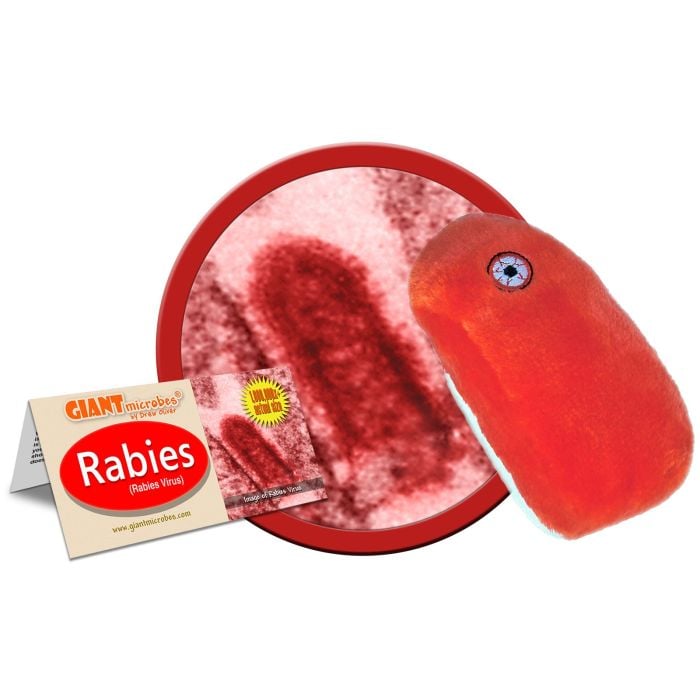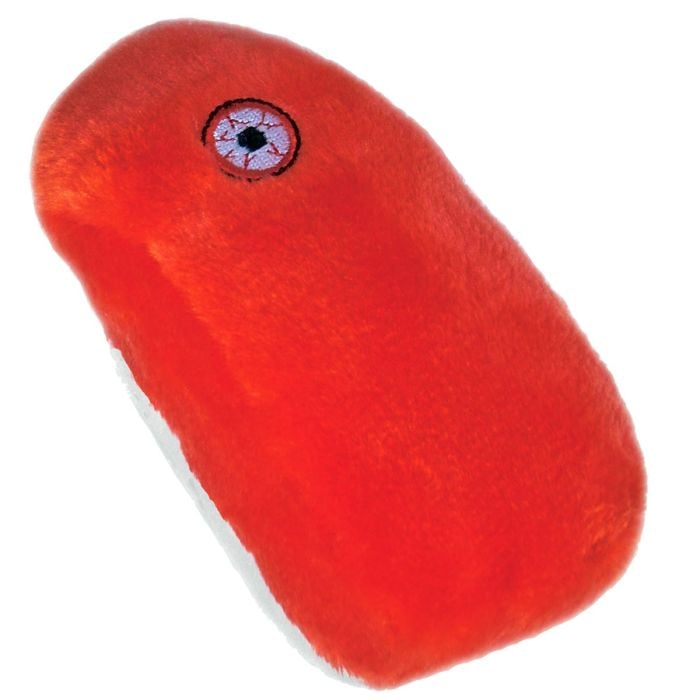Rabies (Rabies Virus)
Beware the bite! Rabies is one of the deadliest viruses on Earth, but this plush is all bark and no bite. With vivid red coloring and special embroidered eyes, this microbe is a striking and memorable gift for science fans, healthcare professionals and animal lovers.
Rabies is caused by a virus spread through the saliva of infected animals, often by bites. Once symptoms appear, the disease is almost always fatal - but it’s also 100% preventable with vaccination and fast treatment after exposure. Our plush comes with educational facts to help spread awareness, not infection.
Whether you’re studying zoonotic diseases, shopping for a vet, or just have a wicked sense of humor, Rabies is a dangerously cute addition to your plush pathogen collection. One look into those wild eyes and you’ll be infected with curiosity.
Product Details
Additional Information
| Sizes | Giantmicrobes are based on actual microbes, cells, organisms and other critters, only 1,000,000 times actual size! Gigantic (GG) 40-60cm XL (XL) 25-38cm Original (PD) 12-20cm Minis (MM) 5-10cm each Keychain (KC) 5-10cm with clip |
|---|---|
| Materials | Plush from all new materials. Stuffed with polyester fiber fill. Surface washable: sponge with water & soap, air dry. |
| Packaging | Each plush microbe includes a printed card with fun, educational and fascinating facts about the actual microbe or cell. |
| Safety | Every product meets or exceeds U.S. and European standards for safety. For ages 3 and up. |
All about Rabies (Rabies Virus)
FACTS: According to the famous song by Noel Coward, only mad dogs and Englishmen go out in the midday sun – but at least the dogs may have an excuse. In its latter stages, rabies causes fever, insomnia, hallucinations, foaming at the mouth, and extreme aggression.
Rabies is present in the saliva of infected animals, and biting is the primary means of transmission, which is one reason mad dogs have been a source of terror since ancient times. (The other reason is their teeth.) After infection, it generally takes 3 to 12 weeks for the virus to spread through the nerves to the spinal cord up toward the brain.
Once symptoms begin, death is inevitable. However, proper treatment during the incubation period can cure the disease, a discovery made by Louis Pasteur in 1885 when he used his newly developed vaccine to save a boy bitten by a rabid dog. Since Pasteur’s discovery, the death rate from rabies has dropped 99%; 10 million people per year now receive post-exposure preventative treatment.
While the treatment is painful and expensive, an abundance of caution is certainly justified after an animal bite, particularly where the animal is not available for testing. But why wait to be cautious? Ensure that your pets have the rabies vaccination and all appropriate booster shots; avoid contact with all wild animals and strays; and if an animal does bite you, clean the wound and call your doctor immediately.





